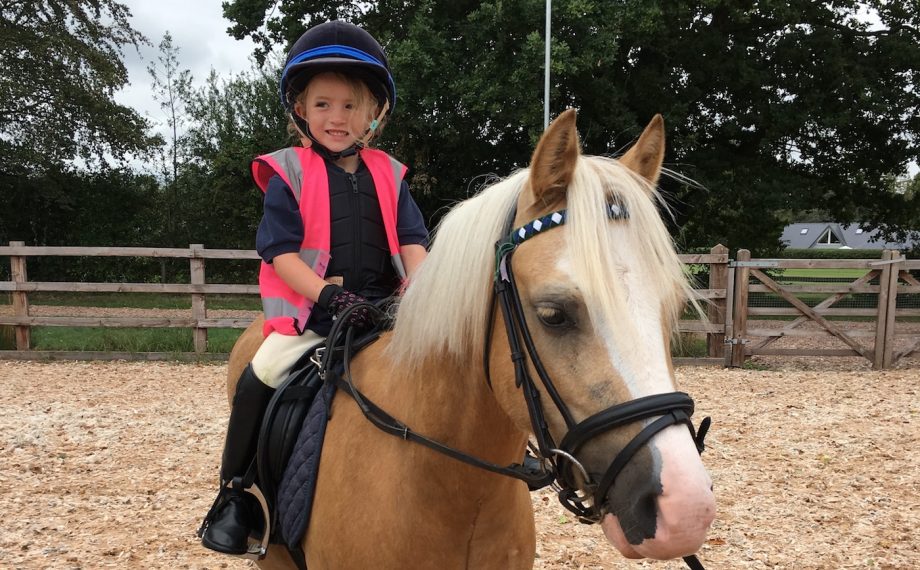Helmet safety specialists MIPS (multi-directional impact protection system) is opening its virtual testing tool to the wider market to help brands’ research and design. H&H speaks to MIPS and manufactuers to find out what this means for riders and the market
ADVANCES in virtual helmet testing are hoped to push hat safety forwards at new speed, while helping keep costs down.
The progress concerns finite element analysis (FEA) tools, which allow engineers and developers to simulate real-world testing on virtual products. While FEA tools are not new, how they are being used in helmet design – and who has access to them – has taken a sizeable step forwards.
{"content":"PHA+SGVsbWV0IHNhZmV0eSBzcGVjaWFsaXN0cyBNSVBTIChtdWx0aS1kaXJlY3Rpb25hbCBpbXBhY3QgcHJvdGVjdGlvbiBzeXN0ZW0pIGFubm91bmNlZCBpbiBPY3RvYmVyIGl0IGlzIG9wZW5pbmcgaXRzIHZpcnR1YWwgdGVzdGluZyB0b29sIHRvIHRoZSB3aWRlciBtYXJrZXQgdG8gaGVscCBicmFuZHPigJkgcmVzZWFyY2ggYW5kIGRlc2lnbi48L3A+CjxwPk1JUFPigJlzIEZFQSB0ZXN0aW5nIHNlcnZpY2UgYWxsb3dzIHRlc3Rpbmcgb2YgaGVsbWV0cyB2aXJ0dWFsbHkgaW4gYWNjb3JkYW5jZSB3aXRoIGEgcmFuZ2Ugb2YgPGEgaHJlZj0iaHR0cHM6Ly93d3cuaG9yc2VhbmRob3VuZC5jby51ay90YWcvc2FmZXR5Ij5zYWZldHk8L2E+IHN0YW5kYXJkcy48L3A+CjxwPk1JUFMgY2hpZWYgZXhlY3V0aXZlIE1heCBTdHJhbmR3aXR6IHRvbGQgPGVtPkgmYW1wO0g8L2VtPiB0aGUgY29tcGFueSBzdGFydGVkIEZFQSBtb2RlbGxpbmcgaW4gMjAwMiBhbmQgaGFzIHVzZWQgaXQgZm9yIGEgbG90IG9mIGV4cGVyaW1lbnRhbCB0ZXN0aW5nIGFuZCB0ZWNobm9sb2d5IGRldmVsb3BtZW50LCBidXQgdGhpcyBtYXJrcyB0aGUgcHVibGljIGxhdW5jaCBvZiBvcGVubHkgb2ZmZXJpbmcgdGhhdCBjYXBhYmlsaXR5IHRvIGJyYW5kcy48L3A+CjxwPjxkaXYgY2xhc3M9ImFkLWNvbnRhaW5lciBhZC1jb250YWluZXItLW1vYmlsZSI+PGRpdiBpZD0icG9zdC1pbmxpbmUtMiIgY2xhc3M9ImlwYy1hZHZlcnQiPjwvZGl2PjwvZGl2PjxzZWN0aW9uIGlkPSJlbWJlZF9jb2RlLTMxIiBjbGFzcz0iaGlkZGVuLW1kIGhpZGRlbi1sZyBzLWNvbnRhaW5lciBzdGlja3ktYW5jaG9yIGhpZGUtd2lkZ2V0LXRpdGxlIHdpZGdldF9lbWJlZF9jb2RlIHByZW1pdW1faW5saW5lXzIiPjxzZWN0aW9uIGNsYXNzPSJzLWNvbnRhaW5lciBsaXN0aW5nLS1zaW5nbGUgbGlzdGluZy0tc2luZ2xlLXNoYXJldGhyb3VnaCBpbWFnZS1hc3BlY3QtbGFuZHNjYXBlIGRlZmF1bHQgc2hhcmV0aHJvdWdoLWFkIHNoYXJldGhyb3VnaC1hZC1oaWRkZW4iPg0KICA8ZGl2IGNsYXNzPSJzLWNvbnRhaW5lcl9faW5uZXIiPg0KICAgIDx1bD4NCiAgICAgIDxsaSBpZD0ibmF0aXZlLWNvbnRlbnQtbW9iaWxlIiBjbGFzcz0ibGlzdGluZy1pdGVtIj4NCiAgICAgIDwvbGk+DQogICAgPC91bD4NCiAgPC9kaXY+DQo8L3NlY3Rpb24+PC9zZWN0aW9uPjwvcD4KPHA+4oCcSXTigJlzIGVhcmx5IGRheXMsIHdl4oCZdmUgcnVuIGEgY291cGxlIG9mIHByb2plY3RzIHdpdGggc2ltdWxhdGlvbiBhbmQgYnJhbmRzIHRoaW5rIGl04oCZcyBmYW50YXN0aWMgYmVjYXVzZSB0aGV5IGNhbiBzZWUgaG93IGEgaGVsbWV0IHdpbGwgcGVyZm9ybSBiZWZvcmUgaXQgZXhpc3RzLOKAnSBzYWlkIE1yIFN0cmFuZHdpdHosIGV4cGxhaW5pbmcgTUlQUyBvZmZlcnMgRkVBIHRlc3Rpbmcgb24gdGhlIHJvdGF0aW9uYWwgZWxlbWVudCBvZiBwcm90ZWN0aW9uIHJhdGhlciB0aGFuIGp1c3QgY29tcHJlc3Npb24uPC9wPgo8cD7igJxUaGF04oCZcyB0aGUgY29tcGxpY2F0ZWQgcGFydCwgYmVjYXVzZSBhbGwgb2YgYSBzdWRkZW4geW91IGhhdmUgdGhlIG1vdmVtZW50LCBhIGNlcnRhaW4gYW5nbGVkIGltcGFjdC48L3A+CjxwPuKAnE91ciBjb21taXRtZW50IGlzIHRvIG1ha2UgdGhlIHdvcmxkIGEgbGl0dGxlIGJpdCBzYWZlciwgc28gd2UgbmVlZCB0byBicmluZyB0aGlzIHRvIHRoZSBtYXJrZXQuIFdlIHdpbGwgc3RhcnQgc21hbGwgd2l0aCBhIGNvdXBsZSBvZiBicmFuZHMsIGJ1dCBteSBhbWJpdGlvbiBpcyB0byByb2xsIHRoaXMgb3V0IHRvIGEgbG90IG9mIG90aGVycy4gSXQgaXMgYSBmYW50YXN0aWMgdG9vbC4gRnJvbSBhIHN1c3RhaW5hYmlsaXR5IHBvaW50IG9mIHZpZXcgeW91IGRvbuKAmXQgbmVlZCB0byBnbyBpbnRvIHRyaWFsIGFuZCBlcnJvciwgeW91IGNhbiBkZXZlbG9wIGhlbG1ldHMgYSBsb3QgZmFzdGVyLCB5b3Uga25vdyB5b3Ugd2lsbCBoYXZlIGEgc2FmZXIgcmVzdWx0LCBzbyBJIHRoaW5rIGl04oCZcyBhIHdpbi13aW4gaW4gbW9zdCBhc3BlY3RzLuKAnTwvcD4KPGRpdiBjbGFzcz0iYWQtY29udGFpbmVyIGFkLWNvbnRhaW5lci0tbW9iaWxlIj48ZGl2IGlkPSJwb3N0LWlubGluZS0zIiBjbGFzcz0iaXBjLWFkdmVydCI+PC9kaXY+PC9kaXY+CjxwPkFsZXggQnVyZWssIG9mIENoYXJsZXMgT3dlbiB3aGljaCBoYXMgYmVlbiB3b3JraW5nIHdpdGggTUlQUyBmb3IgZml2ZSB5ZWFycywgdG9sZDxlbT4gSCZhbXA7SDwvZW0+IHRoaXMgZGV2ZWxvcG1lbnQgaXMg4oCcdmVyeSBleGNpdGluZ+KAnS48L3A+CjxwPlNoZSBzYWlkIHRvb2xzIHN1Y2ggYXMgRkVBIGFsbG93IHByb3RvdHlwZXMgdG8gYmUgdGVzdGVkIG1vcmUgcXVpY2tseSwgZ2l2aW5nIGZhc3RlciBpbnNpZ2h0cyBpbnRvIHBvdGVudGlhbCBpbXByb3ZlbWVudHMuPC9wPgo8ZGl2IGNsYXNzPSJhZC1jb250YWluZXIgYWQtY29udGFpbmVyLS1tb2JpbGUiPjxkaXYgaWQ9InBvc3QtaW5saW5lLTQiIGNsYXNzPSJpcGMtYWR2ZXJ0Ij48L2Rpdj48L2Rpdj4KPHA+4oCcSW4gc2hvcnQsIHRoZSBmYXN0ZXIgd2UgY2FuIGludGVycHJldCBkZXZlbG9wbWVudCBkYXRhLCB0aGUgcXVpY2tlciB3ZSBjYW4gbWFrZSBiaWdnZXIgbGVhcHMgaW4gZXF1ZXN0cmlhbiBzYWZldHkgd2l0aGluIG91ciBpbi1ob3VzZSBpbm5vdmF0aW9uIGxhYiwgd2hpY2ggd2lsbCBzYXZlIG1vcmUgbGl2ZXMgd2hlbiBwcm9kdWN0cyBhcmUgYnJvdWdodCB0byBtYXJrZXQs4oCdIHNoZSBhZGRlZC48L3A+CjxwPkNoYW1waW9uIEhhdHMgYWxzbyB0b29rIGEgbWFqb3Igc3RlcCB0aGlzIHllYXIgaW4gb3BlbmluZyBpdHMgc3RhdGUtb2YtdGhlLWFydCB0ZXN0aW5nIGxhYm9yYXRvcnkuPC9wPgo8ZGl2IGNsYXNzPSJhZC1jb250YWluZXIgYWQtY29udGFpbmVyLS1tb2JpbGUiPjxkaXYgaWQ9InBvc3QtaW5saW5lLTUiIGNsYXNzPSJpcGMtYWR2ZXJ0Ij48L2Rpdj48L2Rpdj4KPHA+VGhpcyBicm91Z2h0IHRvb2xzIHRvIGFpZCBkZXZlbG9wbWVudCBhbmQgaW1wcm92ZSB0aGUgc2FmZXR5IG9mIENoYW1waW9u4oCZcyBwcm9kdWN0cyBpbi1ob3VzZSwgd2hpY2ggaXQgaGFkIGJlZW4gdXNpbmcgYXMgcGFydCBvZiBpdHMgZml2ZS15ZWFyIGNvbGxhYm9yYXRpb24gd2l0aCB0aGUgVW5pdmVyc2l0eSBvZiBDYXJkaWZmLjwvcD4KPHA+VGhlc2UgaW5jbHVkZSBGRUEgbW9kZWxsaW5nIG9mIHNoZWxsIGNvbXByZXNzaW9uIGFuZCBvcHRpbWlzYXRpb24gYXMgd2VsbCBhcyAzRCBwcmludGluZyBvZiBzY2FsZWQgaGVsbWV0IHNoZWxscyBhbmQgRkVBIHZlcmlmaWNhdGlvbiBvZiB0aGVzZS48L3A+CjxkaXYgY2xhc3M9ImluamVjdGlvbiI+PC9kaXY+CjxwPkEgQ2hhbXBpb24gc3Bva2VzbWFuIHNhaWQgdGhlIGZpcm0gaXMg4oCccHJvdWQgdG8gYmUgdGhlIGZpcnN0IG9yZ2FuaXNhdGlvbuKAnSB0byBicmluZyB0aGUgdGVzdGluZyB0b29scyBpbiBob3VzZSwgYW5kIGhhcyByZWNydWl0ZWQgdGhyZWUgZW5naW5lZXJzLCB3aG8gYWxsIGhhdmUgdmFzdCBleHBlcmllbmNlIGluIEZFQSwgY29tcHV0ZXItYWlkZWQgZGVzaWduIGFuZCAzRCBwcmludGluZy48L3A+CjxwPuKAnFdlIGxvb2sgZm9yd2FyZCB0byBwcm92aWRpbmcgYSBicmlnaHQgbmV3IHNhZmUgZnV0dXJlIGZvciBhbGwgb3VyIGN1c3RvbWVycyBhcyBvdXIgcmVwdXRhdGlvbiBpcyBidWlsdCBvbiBpdCzigJ0gc2hlIGFkZGVkLjwvcD4KPHA+Cg=="}
You might also be interested in…
Library image.
Credit: TREVOR MEEKS
Libray image.
Credit: Alamy Stock Photo
FEI medical committee chairman Dr Mark Hart reminded equestrians they cannot ‘just apply what we want and ignore what is
Credit: Victoria Baker
‘Sometimes people save their best hats for competitions, but they should be wearing them at home too’
Credit: Alamy Stock Photo
Equestrianism will always be a high-risk sport, but horse and rider injury rates are decreasing. H&H assesses the latest safety
‘Some of these cyclists seem to just ride along, heads down, with no thought of any consequences’
Stay in touch with all the news in the run-up to and throughout the major shows and events during 2025 and beyond with a Horse & Hound subscription. Subscribe today for all you need to know ahead of these major events, plus online reports on the action as it happens from our expert team of reporters and in-depth analysis in our special commemorative magazines. Have a subscription already? Set up your unlimited website access now
H&H senior news writer
Lucy is an experienced news journalist, reporter and presenter. Since joining the Horse & Hound team in 2015, Lucy has reported from major global sporting events including the Tokyo Paralympic Games and multiple European Championships, as well as Badminton, Burghley and London, to name a few. She has covered current affairs and sports news across the full spectrum of equestrian disciplines and racing, as well as human and equine welfare, industry news and court cases.






